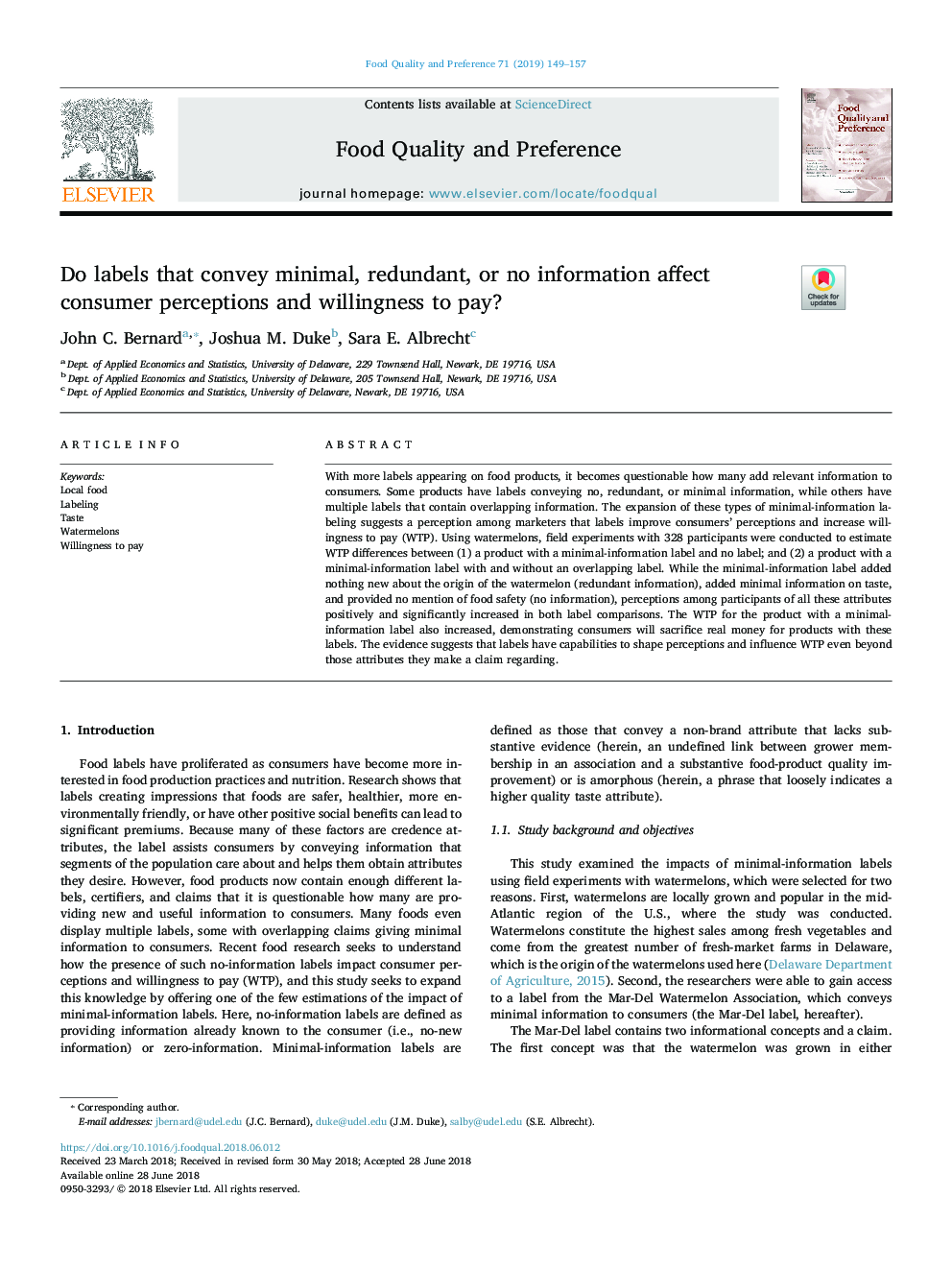| Article ID | Journal | Published Year | Pages | File Type |
|---|---|---|---|---|
| 8838366 | Food Quality and Preference | 2019 | 9 Pages |
Abstract
With more labels appearing on food products, it becomes questionable how many add relevant information to consumers. Some products have labels conveying no, redundant, or minimal information, while others have multiple labels that contain overlapping information. The expansion of these types of minimal-information labeling suggests a perception among marketers that labels improve consumers' perceptions and increase willingness to pay (WTP). Using watermelons, field experiments with 328 participants were conducted to estimate WTP differences between (1) a product with a minimal-information label and no label; and (2) a product with a minimal-information label with and without an overlapping label. While the minimal-information label added nothing new about the origin of the watermelon (redundant information), added minimal information on taste, and provided no mention of food safety (no information), perceptions among participants of all these attributes positively and significantly increased in both label comparisons. The WTP for the product with a minimal-information label also increased, demonstrating consumers will sacrifice real money for products with these labels. The evidence suggests that labels have capabilities to shape perceptions and influence WTP even beyond those attributes they make a claim regarding.
Related Topics
Life Sciences
Agricultural and Biological Sciences
Food Science
Authors
John C. Bernard, Joshua M. Duke, Sara E. Albrecht,
